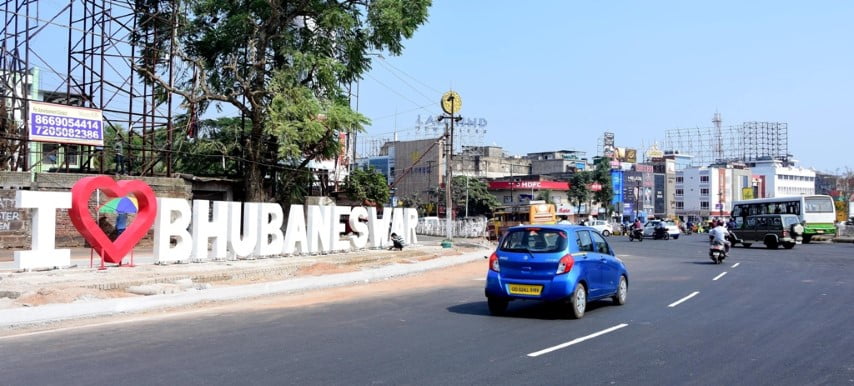Young Odisha Can Realise Trillion Dollar Dream

Mahatama Gandhi’s idea of ‘Nai Taleem’ is perhaps his best gift to the world.
‘Nai Taleem’ was conceived as new education idea, in which practical skills serve as the centre and foundation of an individual – spiritual, cultural and social development. The concept emphasises on producing socially useful and productive work (SUPW) in which applied skill derives new knowledge, which in turn produces more profound work. It is an upward never-ending progressive spiral.
‘Satyagraha’ is way of life based on love and compassion, said Gandhi. He had demonstrated it through his own life and with his all experiments. It is a new form of another education, that supports lifelong learning.
Gandhi’s ‘Satyagraha’ is a strong weapon. That strength can come only by following the path of truth with non-violence. His fundamental belief is in ‘satya’ or truth, which he also calls God. Satya is the ruling principle of the universe. It is a new form of life-skill, which motivates lifelong learning.
Hence, the idea of ‘Nai Taleem’ and ‘Satyagraha’ synthesise a new way, where an exquisite fundamental can be derived to build a new principle of workforce creation. A workforce, which is ready to take off the challenges of the 21st century and its workplaces. The narrative is to build such workforces, that are ready for self-learning, self-space learning and self-path learning only by doing socially useful and productive work – ‘SUPW’.
The challenges vis-à-vis opportunities from 21st century technologies like Artificial Intelligence (AI), Machine Learning (ML), Quantum Computing demand a mindset of lifelong learning, which Mahatama Gandhi advocates in his golden principles.
The practical as well as the political challenges that everyone is facing in the area of job creation and job proliferation are directly proportional to SUPW and the willingness to learn continuously. So, there is no alternative channel to fulfil the requirements, which the 21st century workplace demands, in the form of education, alternative education and other forms of skill, delinking the concept advocated through ‘Nai Taleem’.
The possible way to meet the demand of current workplaces are many but the feasible and workable means are adhered to ‘work-based learning’. This is the process to enable the youth to ‘learn through work and earn through work’. It is a spontaneous process in the heart of the problem to bring a spontaneous solution. This is the never-ending process of learning, a continuous uninterrupted process and is the demand of the time. It is the process of erasing ‘L’ from the word ‘Learning’. The basic purpose of Learning is ‘Earning’, i.e. earning of knowledge, livelihood, and prestige.
Odisha has a total workforce of 175.41 lakh, which is 41.8 percent of the total population as against 38.4 percent at the all-India level. The proportion of male and female workers works out 67.9 percent and 32.1 percent respectively. Of the total workers, the main workers constitute 61 percent, while the rest 39 percent belong to marginal workers. The total workers have registered a growth of 22.9 percent over 2001, which is higher than population growth rate of 14 percent during the decade. It is really an opportunity for a state like Odisha.
It is a young Odisha. The maximum workforce is in their early life and around 50 percent of the total inhabitants are hungry to take up new challenges to build a new Odisha. Only they can dream and make a trillion-dollar economy. They need appropriate skills as per the demand of the job market. A comprehensive training or skill enhancement programme to harvest socially useful and productive work is the need of the hour. The huge gig economy and the need for skilled workers clearly indicates the use of instruments advocated by Mahatma Gandhi i.e. ‘Nai Taleem’.
Gig economy offers ample white-collar jobs and new-collar jobs and the effective economy will be US$ 20 billion by 2025. This opportunity looks lucrative to bridge the gap between a “job seeker and the job market”. The demand of gig workers will be huge with the increasing trend of the economy. Our village youth, particularly females, can tap the opportunity to build a new economy and a new paradise for themselves. The instrumentation needs to be established with a well-planned PPP model to encourage grassroot talent and entrepreneurs who are at the bottom of the pyramid.
The need of the time is to create a sustainable local self-employment for semi-urban and rural youth who cannot afford to migrate to cities and metros. This is the time to create local self-employment for semi-urban and rural youth who are facing economic, ecological and existential crisis. The much-needed peace and prosperity of semi-urban and rural India needs production that is socially useful, job-creating and wealth-generating, less material and less energy intensive, causing less CO2 emission and less pollution, ecologically restoring and regenerative in nature.
A team of lifelong learners needs to work continuously to achieve the heights mostly needed by the youth of urban, semi-urban and rural Odisha for a better and brighter future.
The transformational dreams should be bigger, better, cheaper, faster, wider and deeper.
[The writer is MD, Odisha Knowledge Corporation Limited]
[Disclaimer: The views expressed by the author are his own and do not necessarily represent that of the website]

Comments are closed.